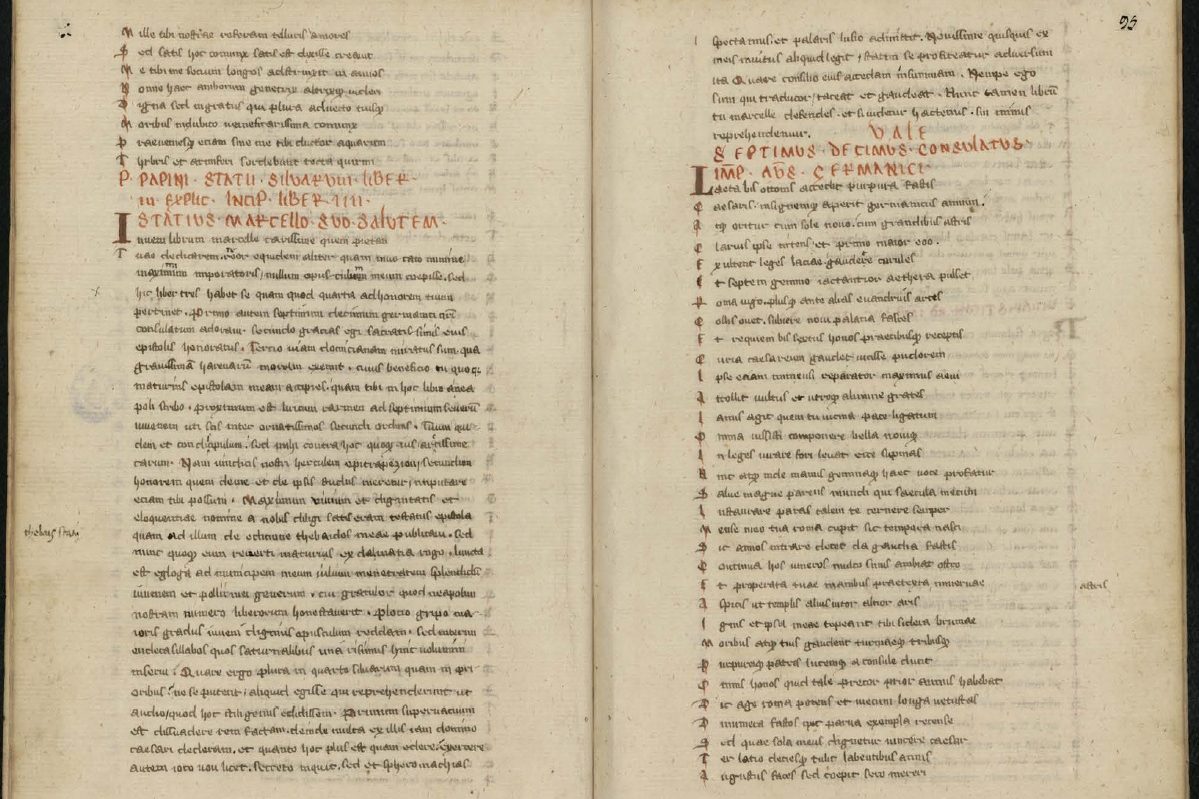Citation of writers, ancient and modern
The citation of ancient evidence is based upon conventions dating back to the initial printed editions of the ancient authors. Citations of these authors are best indicated using parenthetical references in your text using the following conventions.
I. Long works: Most ancient prose texts are divided into “books” (like a long modern chapter) and “chapters” (like a long paragraph or more). Sometimes these works are further divided into “sections” (often just a sentence or two). Long poems are also divided into books, with specific citation given to line numbers. One usually cites a work by citing the name of the work (in italics), book number, chapter number or line number, and section number (where applicable) in Arabic numerals separated by periods. For most of the translations you’ll be using, there are no section numbers.
- Caesar, Civil War 3.99.1 (=Julius Caesar’s commentary The Civil War, book 3, chapter 99, section 1)
- Vergil, Aeneid 6.100-105 (=Vergil’s poem The Aeneid, book 6, lines 100-105)
- Thucydides, History 2.35.1 (=Thucydides’ History of the Peloponnesian War, book 2, chapter 35, section 1)
- Homer, Odyssey 11.100-105 (=Homer’s poem The Odyssey, book 11, lines 100-105)
- Longus, Daphnis and Chloe 4.11 (=Longus’ novel Daphnis and Chloe, book 4, chapter 11)
II. Shorter works: Some works do not have book divisions, but only chapter or line numbers.
- Sallust, Catiline 31-32 (=Sallust’s monograph The Conspiracy of Catiline, chapters 31-32)
- Aristophanes, Wasps 1100-1102 (=Aristophanes’ play The Wasps lines 1100-1102)
- Plutarch, Life of Caesar 29 (=Plutarch’s biography The Life of Caesar chapter 29)
- Petronius, Satyricon 102 (=Petronius’ novel The Satyricon, chapter 102)
III. Collections: Some ancient works are collections, and therefore refer not to chapter numbers but individual units of the text, like letters or poems. In these instances you will want to cite the work name, book number (if applicable) and unit number, again separated by periods.
- Pliny, Letters 10.15 (=Pliny the Younger’s the collection of Letters book 10, letter number 15)
- Horace, Odes 1.38 (=Horace’ collection of Odes book 1, poem number 38)
- Catullus, Poems 85 (=Catullus’ collection of Poems, poem number 85)
With collections of poems you can further cite line numbers.
- Horace, Odes 1.38.1 (=Horace’ collection of Odes book 1, poem number 38, line 1)
- Juvenal, Satires 6.301-365 (=Juvenal’s book of Satires, poem number 6, lines 301-365)
IV. Modern works: With modern works you should use a conventional form of citation (MLA or Chicago). You should provide a works cited list at the end of your paper, including the full reference for modern works. The ancient translations may be cited by ancient author, work, translator, and (if applicable) web source.
Abbreviations of modern scholarly works on Classical Antiquity (as well as abbreviations of the ancient writers) may be found at the beginning Oxford Classical Dictionary. A list of abbreviations of journal titles may be found here.
